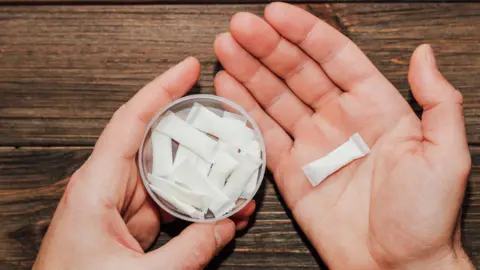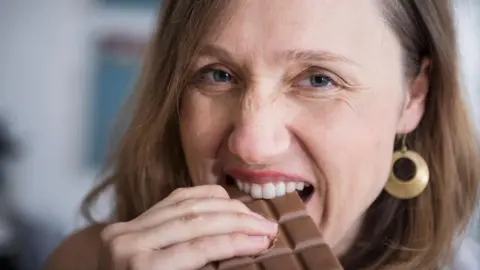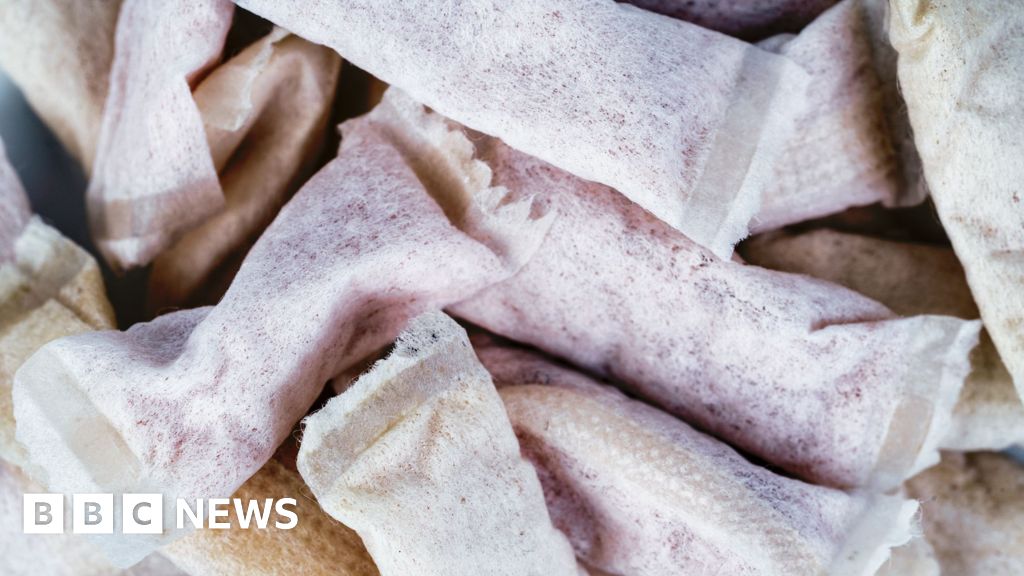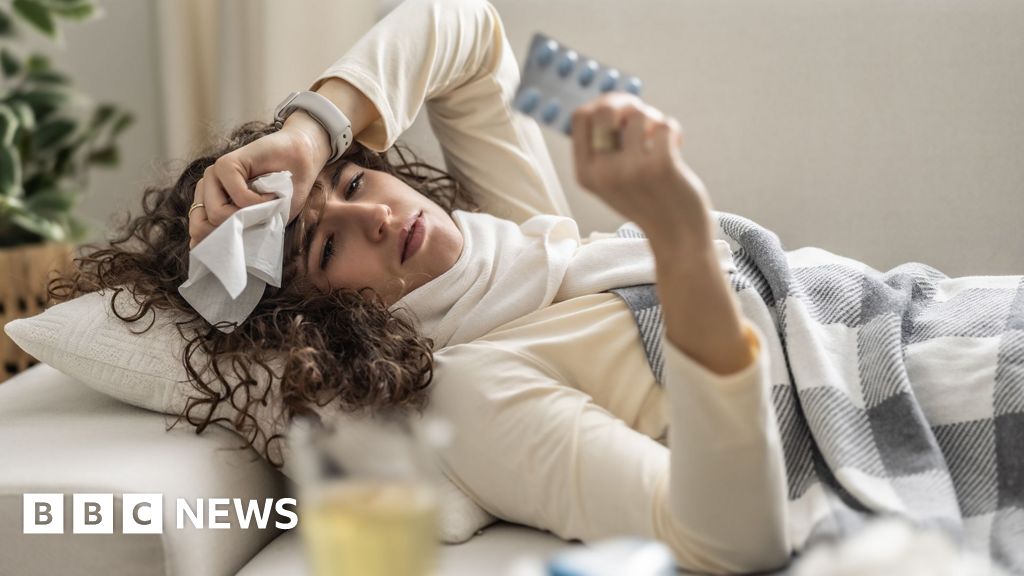Digital health editor, BBC News
 Getty Images
Getty ImagesA growing number of US teenagers are using caffeine pouches to get an energy rush, say experts who worry the trend could soon take off in the UK.
The small teabag-like pouches, placed between the lip and gum, deliver a quick caffeine hit, straight to the bloodstream.
Some social media influencers are pushing products, recommending them to gym-goers for performance or to students who want to be alert for exams.
TikTok Shop sells lots of brands and flavours that could appeal to young people, says Dr Rob van Dam from George Washington University.
But with a single pouch containing as much caffeine as two cups of regular coffee, it could be easy to take too much and get bad side effects, he says.
There is already growing concern in the UK about young people using nicotine pouches or snus.
Caffeine pouches are also discreet – you may not be able to tell if someone has one in their mouth – making it easy to hide from parents and teachers.
Some fans of the product boast online about “buzzing” from using two pouches at once for an extra big caffeine rush.
As caffeine is rapidly absorbed, the effects may begin minutes after ingestion and last for a number of hours. Levels can go out of control.
Dr van Dam told BBC News: “Young people may have less tolerance to caffeine and there’s a chance they could end up in the emergency room if they have too much.”
Why caffeine and what happens if you have too much?
 Getty Images
Getty ImagesCaffeine is a stimulant that can make you feel more alert and less sleepy due to its effect on the brain and nervous system.
Lewis James, from the School of Sport, Exercise and Health Sciences at Loughborough University, says there is good evidence that caffeine can help make exercise feel easier.
It’s become one of the most regularly used supplements among athletes.
As you exercise your body produces a chemical called adenosine which makes you feel tired. Caffeine blocks the adenosine receptors in your nerves, so your brain perceives less pain and fatigue.
But it acts on other parts of the body too – including the cardiovascular system – which can be risky.
High levels can cause a rapid heart rate, abnormal heart rhythms and seizures.
Although rare, there are documented deaths from excess caffeine.
Some people are more sensitive to caffeine than others and can feel nauseous, anxious and irritable, and get headaches even at lower doses.
Generally, up to 400mg of caffeine a day appears to be safe for most healthy adults – that’s around four cups of instant coffee.
Tea contains a bit less, so five cups a day is usually fine.
Pregnant women are advised to halve daily intake to 200mg or less.
Children and teenagers are also more susceptible to the risks and potential for an overdose.
This is why energy drinks containing over 150mg of caffeine, for example, are already required by EU law to carry labels stating: “High caffeine content. Not recommended for children or pregnant or breast-feeding women”.
Watch for other drinks or food that contain caffeine
Dr van Dam says it can be easy to overload. Caffeine is found in many drinks and some foods, so it is important to check how much you are consuming.
“While it’s harder to overdose on coffee, with these products it’s easier, especially if young people are using energy drinks too.”
He says some products, when you check them in the laboratory, contain more caffeine than they claim on the labelling.
 Getty Images
Getty Images- Coffee: a mug contains about 100-140mg of caffeine, but it can vary widely
- Tea: a mug contains about 75mg
- Energy drinks: often contain 80mg in a 250ml can
- Soft drinks: typically contains about 40mg per can
- Chocolate: there is around 25mg of caffeine in a 50g bar of dark chocolate and around 10mg in a 50g bar of milk chocolate
Dentists say using them over time can irritate the gums – similar to snus and nicotine pouches.
Some experts worry caffeine pouches could be a gateway to using these.
Bini Suresh is head of dietetics at the Cleveland Clinic, London, and a spokesperson for the British Dietetic Association.
She says using pouches may feel “trendy” or harmless, but there’s a real risk of normalising stimulant use in teens and young adults, potentially creating patterns of dependency.
She told the BBC: “While caffeine may give a temporary boost, it can disrupt sleep and worsen fatigue over time, especially in children and teens who are more sensitive to its effects.”
If young people are going to have caffeine, the BDA and NHS both advise caution.
The European Food Safety Authority suggests 3mg/kg body weight as the upper limit for children and adolescents, meaning a child weighing 30kg should have no more than 90mg in a day.
Instead of reaching for caffeine, Ms Suresh says it’s far better to focus on regular meals, hydration and nutrient-rich foods that support steady energy levels throughout the day.
A healthy diet with enough iron, protein and slow-releasing carbohydrates should do the job, she says.








